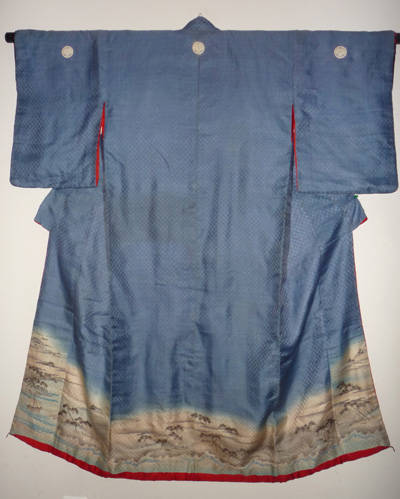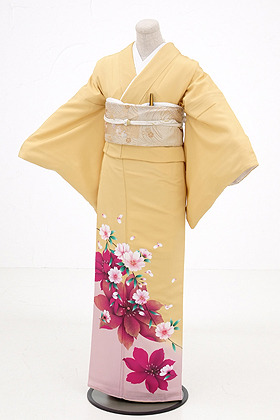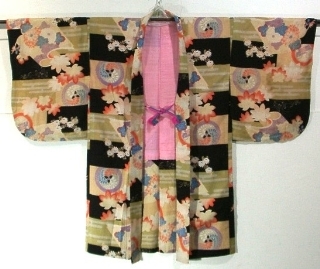
Konnichi wa mina san....
Today we'll discuss about Japanese Traditional Clothes/ it's called wafuku in Japanese, that have been popular around the world.
I have admired Japanese traditional clothes for a long time and i got an opportunity to wore a yukata on bunka taiken classes. Yay, i'm so happy.
 |
| This is the unforgettable experienced i ever had |
 |
| Bunka Taiken Class- Japanese traditional clothes |
The Yukata is made by Utsukushii, the Japanese Yukata Maker. If you are in Indonesia, they are well known for finest quality of Yukata and Japanese traditional clothes. All yukata design is never made twice so just once for every production. The owner said that she could remember all yukata that have been made. Amazing, isn't it. I really get an usefull information when i wore the yukata because i realized that is not easy to tie an obi and need a long time if you cant do it. But because of the problem, if you bu yukata from Utsukushii, you will be offered an instant obi or manual obi. Most of people will choose an instant obi because easy to wear.
http://www.utsukushii.indonetwork.co.id/

It's important to wear a kimono with right ways because if you are wrong, you will wear a soushiki kimono/ mourned kimono for death ceremony. I will explain more about how to wear kimono or yukata and as for today, we will talk about kimono, yukata and hakama. Here you go....
Kimono
First, it's a Kimono, i love to wear kimono
Kimono is a one of traditional Japanese clothes that full lenght robe that made from silk. It's different with yukata and it's always worn in the formal occasion such as wedding ceremony, seijin shiki, etc. It can be wear both men and woman. Kimono is always worn by Japanese before modernization on Meiji Restoration. It's being a part of Japanese Life and symbol of elegant and beauty in Japanese. But nowadays, since the modernization, kimono is replaced by youfuku/ western clothes and only a people with high social status or certain people wear kimono everyday in their life.
A formal kimono can be so heavy to wear because it has a long robe and thick coat that can be five or six so it's heavy.
Kimonos are worn with sashes called obi, which hold the kimono in place and keep the front closed. Obi not only serve this practical function, but are beautiful as well. Obi are about 4 meters (13 feet) long and 30 centimeters (12 inches) wide. There are two types of obi: fukuro-obi, which have a design only on one side; and nagoya-obi, which are narrower in the middle to make them easier to tie around the body. Obi known as nishiki-obi, made in Kyoto, are prized for the lavish colors such as gold and silver that are woven into them. Obi known as hakata-kenjo, made in Fukuoka Prefecture, are also well known. There are various ways of tying the obi. The most popular bow is the taiko-musubi, or "drum bow." This bow, which is tied in back, puffs out like a pillow and is very beautiful. The taiko-musubi has been popular since the late Edo period. Until this bow came on the scene, people did not really care whether their obiwere beautiful or not; the obi was just a way of holding the kimono in place so the front would stay closed. But once the taiko-musubi came out, many others style of beautiful bows followed.
In Japan now, kimono has a many design and made from various fabric, not only from silk.. I just realized that kimono has so many types and we wear it in different ocassion.
Type of Kimono
 |
| Furisode |
 |
| Iromuji |
 Mofuku
Mofuku
 Houmongi
Houmongi
 Komon
Komon
 Kuro Tomesode
Kuro Tomesode



 |
| Irotomesode |
| Uchikake |
| Susoshiki |
| Tsukesage |
Yukata
The Second is Yukata, a Japanese garment, a casual summer kimono usually made of cotton or synthetic fabric, and unlined. It can be wear by woman and men. It's more simple rather than kimono. Originally, yukata is undergarment for kimono bu now yukata are worn at outdoor summer events such as hanabi (fireworks) displays and bon-odori festivals. Yukata are also worn at Japanese inns ryokan after bathing. It can be in long yukata or short yukata in modern times. Yukata has a short sode/ sleeves and kimono has a long sode. I took a girl's yukata for the picture.
 |
| Yukata for Woman |
 | ||
Yukata for Woman
|
And here we go. The last is Hakama, this is my favorite too. Hakama were originally worn only by men, but today they are worn by both sexes. Hakama is traditionally lower garment worn bu Japanese samurai and other. And hakama is used in Aikido, Japanese martial arts. Hakama are tied at the waist and fall approximately to the ankles. Hakama are worn over a kimono (hakamashita) and sometimes it worn in Japanese martial arts. Hakama have seven deep pleats, two on the back and five on the front. The pleats are said to represent the seven virtues of bushido, considered essential to the samurai way.
There are many ways for men to tie hakama. First, the obi is tied in a special knot (an "under-hakama knot") at the rear. Starting with the front, the ties are brought around the waist and crossed over the top of the knot of the obi. The ties are brought to the front and crossed below the waist, then tied at the back, under the knot of the obi. The hakama-dome is then tucked behind the obi, the koshi-ita is adjusted, and the rear ties brought to the front and tied in a variety of ways. The most formal method results in a knot that resembles two bow-ties in a cross shape.
The method of tying the ties is also different, with women's hakama being tied in a simpler knot or a bow. As with men's hakama, the front ties are first brought to the back, then to the front, then tied at the back in a knot. Then the back himo are brought around to the front. At this point, they may be tied with a bow at the left hip, just in front of the opening, with the ends of the ties at equal lengths. For more secure fastening, the ties may be wrapped once at center front, then tied inside at the back.
| Man's Hakama |
 |
| Man's Hakama |
| Woman's Hakama |
 |
Woman's Hakama
|
 |
| Haori for Girl |
Haori for Man
How To Wear Kimono or Yukata?
You can find it in this website:
http://www.gojapango.com/fashion/how_to_wear_yukata.html
or you can find many tutorial in youtube. ^_^
How about it guys?? Hopefully that it's usefull for you. I love to wear Japanese clothes and once i wear it, it feels that i became likes Japanese. But in my country, to get a fine traditional Japanese clothes, it's so expensive to buy it. From now, i think that i'll save a money to buy the clothes..
Thank you that you have read my post
http://web-japan.org/kidsweb/virtual/kimono/kimono03.html
http://en.wikipedia.org/wiki/Kimono
Book of The Kimono Inspiration: Art and Art-To-Wear in America by Rebecca A. T. Stevens, Yoshiko Iwamoto Wada. Pomegranate Publishing, 1996
Book of Why the Japanese Are a Superior People! by Boye Lafayette De Mente,
Book of Aikido Exercises for Teaching and Training, by C. M. Shifflett.
Blue Snake Books, 2009
http://en.wikipedia.org/wiki/Kimono
Book of The Kimono Inspiration: Art and Art-To-Wear in America by Rebecca A. T. Stevens, Yoshiko Iwamoto Wada. Pomegranate Publishing, 1996
Book of Why the Japanese Are a Superior People! by Boye Lafayette De Mente,
Cultural-Insight Books, Jul 8, 2009
Book of Aikido Exercises for Teaching and Training, by C. M. Shifflett.
Blue Snake Books, 2009

Comments
Post a Comment